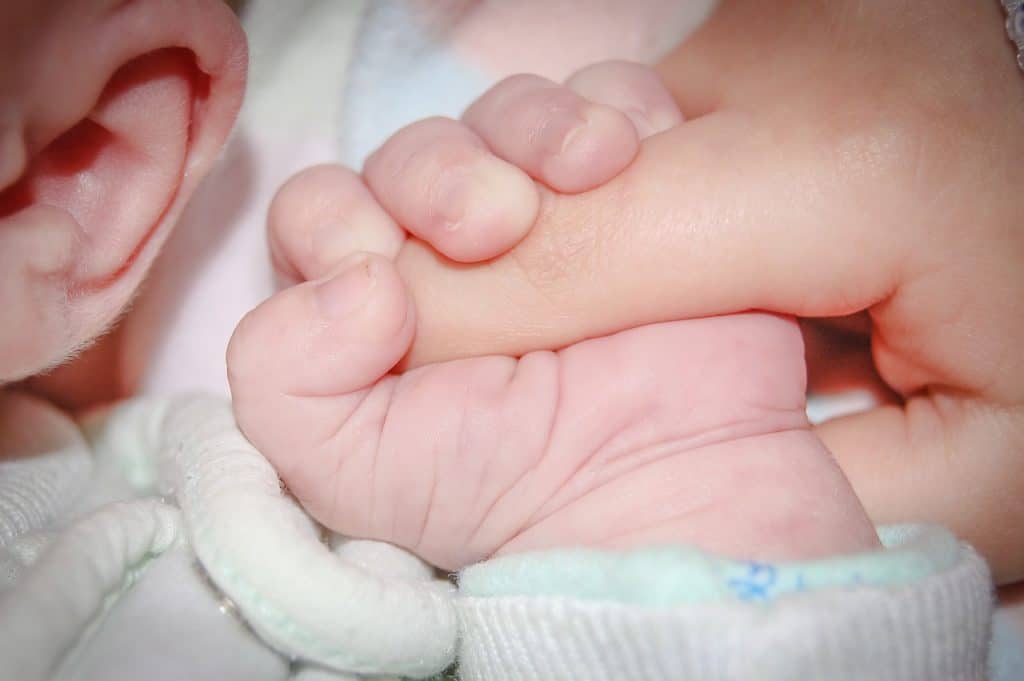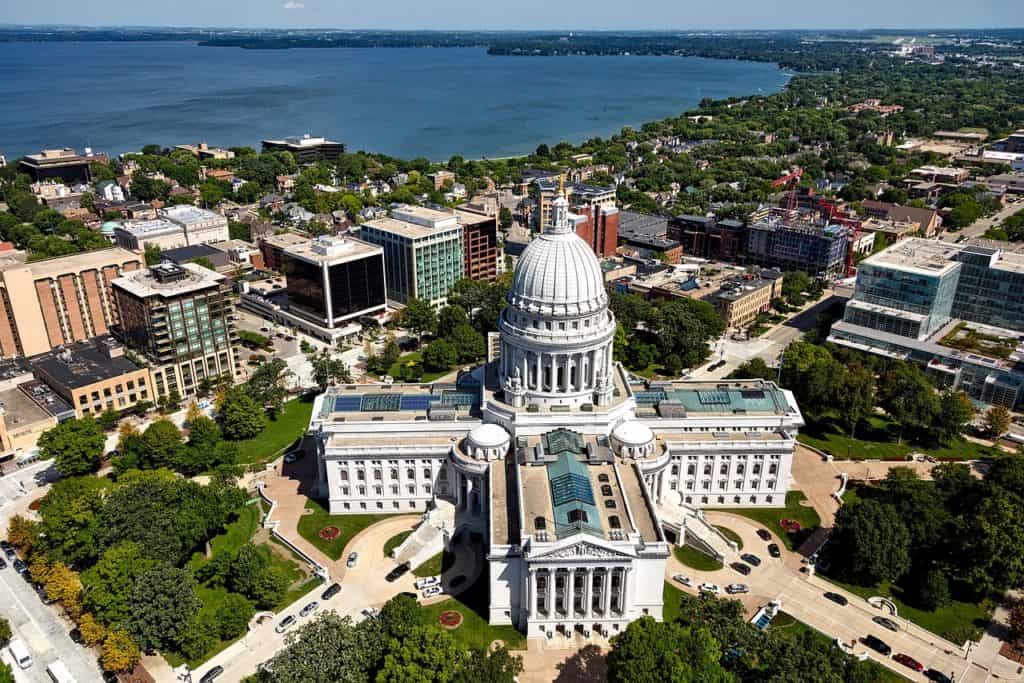Get your FREE consultation! Call NOW
Umbilical cord blood and tissue collection in Madison Wisconsin
Umbilical cord blood and tissue in Madison Wisconsin are collected immediately after birth via a non-invasive and pain-free procedure.
The umbilical cord is clamped and cut as usual, but instead of discarding the placenta and umbilical cord, they are collected by a trained healthcare professional.
The blood is extracted from the cord using a sterile needle and collected into a specialized bag with anticoagulants to prevent clotting. The tissue is collected by cutting a small piece of the cord and placing it into a sterile container.
Both cord blood and tissue are then transported to a laboratory for processing and storage.
This procedure is a safe and effective way to collect valuable stem cells that can be used for future medical treatment


Umbilical cord blood and tissue storage near Madison WI
Umbilical cord blood and tissue in Madison Wisconsin are valuable sources of stem cells, which have the potential to treat a wide range of diseases.
To ensure the preservation of these stem cells, they are collected at the time of birth and stored in specialized facilities.
The most common method of storage is cryopreservation, where the stem cells are slowly frozen and stored in liquid nitrogen at -196°C.
This ensures that the stem cells can be retrieved and used for medical purposes for many years to come. Additionally, many cord blood banks also offer the option to store the umbilical cord tissue, which contains a different type of stem cell that can also be used for medical treatments.
Overall, proper storage of umbilical cord blood and tissue is crucial for their potential use in future medical treatments.

CORD BLOOD BANKING IN MADISON WISCONSIN
What is Cord Blood banking in Madison Wisconsin?
Cord blood banking in Madison Wisconsin is a procedure that has been gaining increased attention in the medical world for its potential to help treat a range of diseases and medical conditions.
In simple terms, cord blood banking involves collecting and storing stem cells from a newborn’s umbilical cord. These stem cells are rich in potential and can be used to help treat a range of illnesses, including certain cancers, blood disorders, and genetic diseases. As a result, many expectant parents are now considering cord blood banking as a way to secure their child’s health for the future.
The process of banking umbilical cord blood involves collecting the blood immediately after birth and sending it to a specialized facility for processing and storage.
The cost of storage can vary depending on the service provider and the length of storage time chosen. There are many factors to consider when deciding whether to bank cord blood, including family medical history and the potential future use of the stem cells.
What is cord and tissue banking in Madison Wisconsin?
Cord tissue banking in Madison Wisconsin involves the collection and storage of the cord tissue, which is the gel-like material that surrounds the blood vessels in the umbilical cord. This tissue is rich in stem cells, which are the building blocks of the body’s immune and blood systems. The stem cells found in cord tissue are different from those found in cord blood, making it a valuable resource for future treatments.
Madison, Wisconsin
Madison, Wisconsin is a vibrant and bustling city located in the heart of the Midwest. As the state capital and home to the University of Wisconsin-Madison, it offers a unique blend of political influence, educational opportunities, and cultural attractions. Madison’s picturesque setting on an isthmus between two beautiful lakes and its dedication to sustainability make it a highly desirable place to live, work, and visit. In this blog post, we will explore the diverse offerings of Madison, from its rich history and architecture to its thriving food and drink scene. We will delve into the city’s renowned arts and music scene and highlight some of the many festivals and events that take place throughout the year. We will also showcase Madison’s stunning natural surroundings and the various outdoor activities available, including hiking, biking, and water sports. Whether you are a first-time visitor or a long-time resident, this guide will provide a comprehensive overview of all that Madison has to offer.
1. Vibrant city life and culture.
Madison, Wisconsin is renowned for its vibrant city life and culture. It is a city that offers a unique blend of urban amenities and natural beauty, making it an ideal destination for visitors from all over the world. This city is home to a diverse community of people who are passionate about arts, music, food, and literature. There are many cultural events and festivals throughout the year that showcase the city’s rich heritage, including the Madison Arts Festival, the Wisconsin Book Festival, and the Taste of Madison food festival. The city also has a thriving music scene, with performances by both local and international artists taking place at venues like the Majestic Theater and the Orpheum Theater. Madison is truly a city that celebrates its culture and welcomes visitors to experience it firsthand.
2. Top-rated University of Wisconsin.
The University of Wisconsin-Madison is a highly respected and top-rated research university located in the heart of Madison, Wisconsin. This world-renowned institution boasts a rich history of academic excellence, cutting-edge research, and innovative programs that have earned it a spot among the top public universities in the country. With a diverse student body of over 44,000 and a faculty of over 2,000, the University of Wisconsin-Madison offers a wide range of undergraduate and graduate programs across a variety of academic disciplines. In addition to its rigorous academic standards, the university is also known for its commitment to community engagement and sustainable practices, making it a top choice for students seeking a well-rounded and socially responsible education. Overall, the University of Wisconsin-Madison is an outstanding institution that continues to set the standard for academic excellence and innovation in higher education.
3. Rich history and landmarks.
Madison, Wisconsin is a city with a rich history and landmarks that reflect its diverse cultural heritage. The city has been home to Native American tribes for over 12,000 years, with the Ho-Chunk Nation being the most prominent. The city’s name itself comes from the fourth president of the United States, James Madison. Visitors can explore Madison’s past by visiting its many historic sites, such as the Wisconsin State Capitol, which was built in 1917 and features stunning marble decor and murals depicting Wisconsin’s history. Another must-visit landmark is the University of Wisconsin-Madison campus, which is home to several historic buildings and charming student neighborhoods. Additionally, the city boasts several museums, including the Wisconsin Historical Museum, which highlights the state’s rich history from the Ice Age to the present day. Whether you’re a history buff or simply looking to explore the city’s rich culture, Madison is sure to impress with its many landmarks and historical sites.
4. Beautiful parks and lakes.
Madison, Wisconsin is known for its beautiful parks and lakes that attract visitors throughout the year. The city is home to more than 260 parks, making it one of the most park-rich cities in the United States. Some of the most popular parks in Madison include the Olbrich Botanical Gardens, which features stunning collections of plants and flowers, and the James Madison Park, which offers stunning views of Lake Mendota. In addition to parks, Madison is also home to several lakes, including Lake Mendota, Lake Monona and Lake Waubesa, which provide ample opportunities for outdoor activities like fishing, boating, swimming, and kayaking. Whether you are a resident or a visitor, Madison’s parks and lakes offer a peaceful escape from the busy city life, making it an ideal place to unwind and connect with nature.
5. Home to thriving businesses.
Madison, Wisconsin is home to thriving businesses, making it a great location for entrepreneurs and established companies. With a diverse economy that includes industries such as technology, healthcare, education, and government, there are ample opportunities for businesses of all sizes to thrive in this city. Startups can take advantage of the supportive startup community, including accelerators and coworking spaces, while established businesses can tap into the skilled workforce and world-class research facilities at the University of Wisconsin-Madison. In addition, the city’s strategic location in the Midwest, with easy access to major highways and the Dane County Regional Airport, makes it a prime location for businesses that need to transport goods and services. Overall, Madison’s business-friendly environment, coupled with its high quality of life and strong sense of community, make it an attractive destination for any entrepreneur or business owner looking to grow and succeed.
6. World-renowned farmers market.
Madison, Wisconsin is home to a world-renowned farmers market that draws visitors from far and wide. The Dane County Farmers’ Market, located on the Capitol Square, is the largest producer-only farmers market in the United States. Featuring over 150 vendors, the market offers a wide variety of fresh produce, meats, cheeses, and baked goods. Visitors can also find unique artisan crafts and live musical performances. The market is open on Saturdays during the summer months, and on Wednesdays and Saturdays during the fall and winter. The Dane County Farmers’ Market is a beloved institution in Madison, and a must-visit destination for foodies and travelers alike.
7. Foodie paradise with diverse cuisine.
Madison, Wisconsin is a foodie paradise with diverse cuisine that caters to all tastes and preferences. From classic American comfort food to ethnic delicacies, the city has numerous restaurants, cafes, and food trucks that offer a wide range of culinary options. Madison is known for its farm-to-table movement, which emphasizes the use of locally-sourced and fresh ingredients in cooking. This creates a unique dining experience where you can taste the flavors of the region in every bite. In addition, the city has a vibrant food scene that celebrates diversity and cultural exchange. You can find authentic dishes from around the world, such as Indian, Chinese, Mexican, and Italian, among others. Whether you are looking for a fancy fine-dining experience or a casual eatery, Madison has it all.
8. Four distinct seasons and festivals.
One of the defining features of Madison, Wisconsin is its distinct four seasons and the festivals that accompany them. Madison experiences warm summers, cold winters, and beautiful springs and falls. Summers are marked by high temperatures and a bustling social scene, as the city hosts a variety of outdoor events, including concerts, farmers markets, and outdoor movie screenings. In the fall, the city is painted with a stunning array of colors and hosts the annual Taste of Madison festival, where visitors can sample cuisine from over 80 local restaurants. During the winter, Madison transforms into a winter wonderland, with snow-filled streets and numerous ice-skating rinks throughout the city. The winter season also features the popular Madison Winter Festival, which includes a variety of winter sports and activities. Finally, spring in Madison is a time of renewal, with the city’s beautiful parks and gardens coming back to life. The season also includes the popular Brat Fest, where visitors can enjoy delicious bratwurst and other Wisconsin-style foods while listening to live music. Overall, Madison’s distinct seasons and festivals offer something for everyone and make the city a wonderful place to live or visit.
9. Easy access to outdoor recreation.
Madison, Wisconsin has always been a popular destination for outdoor enthusiasts, thanks to its easy access to outdoor recreation. The city is surrounded by beautiful parks, trails, and natural areas that offer endless opportunities to explore and enjoy the great outdoors. The city’s extensive network of bike paths and trails is perfect for biking, hiking, and running. The University of Wisconsin Arboretum, just a few miles from downtown, offers 1,200 acres of prairie, woodland, and wetland habitats and has miles of trails for hiking, snowshoeing, and cross-country skiing. Additionally, the city has several lakes that offer opportunities for boating, fishing, kayaking, and swimming. Madison’s outdoor recreation options are not only great for exercise and relaxation, but they also promote a healthy and active lifestyle.
10. Welcoming and friendly community.
Madison, Wisconsin is known for its welcoming and friendly community. It is a place where people feel comfortable and at home, regardless of their background or interests. The city’s residents are known for their Midwestern hospitality, making visitors feel welcome and valued. The city’s charm is reflected in its numerous community events, such as concerts, festivals, and farmers’ markets, where locals and visitors alike can come together and enjoy the city’s culture. Madison’s welcoming and friendly community is sustained through numerous initiatives, such as community outreach programs, volunteer opportunities, and nonprofit organizations. These efforts contribute to making Madison a vibrant and inclusive community that values diversity and collaboration.
In conclusion, Madison, Wisconsin is a city that has a lot to offer. It is known for its beautiful lakes, vibrant downtown, and world-class university. With a strong economy and a thriving arts and culture scene, Madison is an attractive option for both businesses and individuals. The city’s commitment to sustainability and inclusivity also makes it a leader in progressive policies. Whether you are a visitor or a resident, Madison is a city that offers endless opportunities for growth, learning, and enjoyment.
Get your FREE consultation! Call NOW
Get your FREE consultation! Call NOW
Get your FREE consultation! Call NOW
Table of Contents
Toggle
